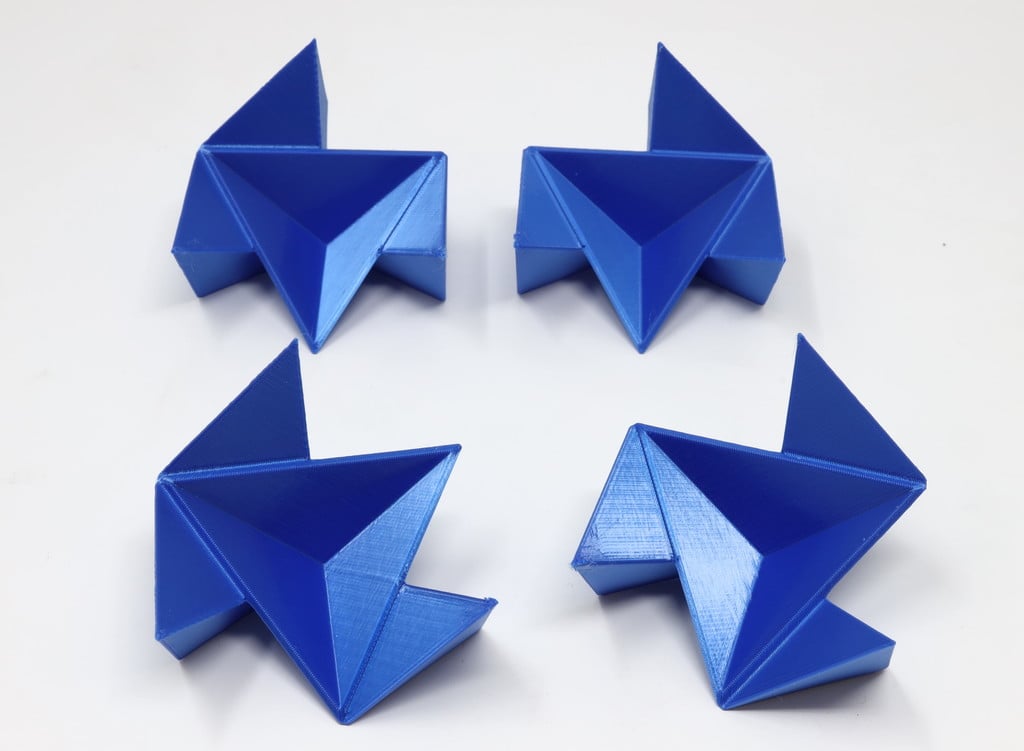
4-piece RD Puzzle
thingiverse
This puzzle seems to work better in plastic than wood. Wood versions tend to be very tight, I have broken several wood copies trying to get them apart. The basic puzzle (De Doe Dak Ka) was invented by Stuart Gee and Stephen Chin. Four identical pieces assemble into a rhombic dodecahedron (RD). Assembly is quite difficult! Be warned. I posted a video of the assembly for those who are stuck. https://www.youtube.com/watch?v=VJpAzNO1oEw You can make the basic puzzle plus five variations. There are three types of pieces: B (basic), A (alternate) and M (mirror alternate). Basic puzzle (De Doe Dak Ka) 4xB (4 copies of piece B) Variation 1: 4xA Variation 2: 2xB + 2xA Variation 3: 2xA + 2xM Variation 4: 1xB + 3xM Variation 5: 1xB + 2xA + 1xM (hardest) Most variations require coordinate motion to disassemble (or assemble), but some do not. Variation 1 comes apart into two identical halves. Variation 3 has two solutions, one comes apart into identical halves, the other via interesting "loose" coordinate motion. All others can be quite tricky to assemble. Disassembly is normally easy if you know the trick. If the puzzle is tight, however, it can be very difficult to get apart. PLA is quite slippery and I have not had a problem with these being tight. The pieces have an offset of 0.1 mm, and the final RD diameter is 56.6 mm. I have hollowed out an internal cube in this puzzle, the internal cube has side length of 36 mm. The outer faces can also be shaved down so that the external shape is a cube. I named this version "Dice Cube", Scott Elliott (https://www.thingiverse.com/verywetpaint/designs) made many copies of this in 2011. The cube versions tend to be harder to take apart.
With this file you will be able to print 4-piece RD Puzzle with your 3D printer. Click on the button and save the file on your computer to work, edit or customize your design. You can also find more 3D designs for printers on 4-piece RD Puzzle.
